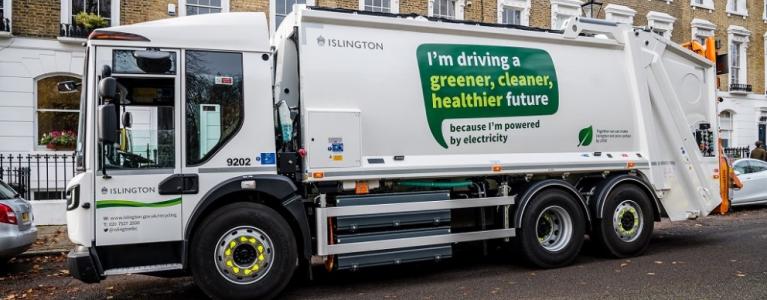
London, like most cities around the world, is throwing away too much waste. Not only is this needlessly wasting valuable resources that can be reused, it’s also extremely harmful to our planet.
The Mayor has ambitious targets for London to cut food waste by 50 per cent per person and recycle 65 per cent of its waste by 2030. The responsibility for collecting waste and recycling lies with London’s boroughs, and through his Environment Strategy, the Mayor asked boroughs to produce plans to set out how they will cut waste and increase recycling. With ReLondon (the new name for the London Waste and Recycling Board), the Mayor has been working with boroughs to help put these plans in place and move towards more circular systems.
The new borough waste plans (known as Reduction and Recycling Plans) show an amazing range of hard work that local authorities are doing to deliver these targets. Altogether, there are over 500 different projects and actions identified in the plans, across 50 different topic areas, all dealing with waste and recycling. One of the Mayor’s key priorities is to ensure every Londoner can recycle at least the most common six key materials (paper, card, cans, glass, plastic bottles and plastic pots, tubs and trays). He also wants to increase the number of properties with access to food waste collections, improve recycling from flats, and reduce the amount of food being wasted in the first place.
All of the borough plans were written pre-COVID. Over the past year, waste services have been on the frontline, making sure that waste and recycling continues to be collected. Waste crews have had to cope with large increases in the amount of waste and recycling put out by residents, with everyone at home in lockdown. They have also had to find new ways of working with social distancing, and high levels of absence as a result of crews having to self-isolate to protect others.
Despite these challenges, London’s boroughs have done an amazing job to keep collections going and keep everyone safe. On top of this, they have also been working to deliver the projects and service improvements set out in their Reduction and Recycling Plans, to make it easier for Londoners to recycle more and waste less.
Barking and Dagenham are increasing their fortnightly recycling collections to include all six key materials, and Newham is also looking to introduce weekly recycling with a wider range of materials. Hammersmith and Fulham have started a food waste recycling pilot for the first time, allowing residents to send their food waste to create biogas and fertiliser, saving carbon emissions and money. Lots of boroughs are focussing on services for flats – for example Tower Hamlets have made improvements to 25 of their estates to make it easier for their residents to recycle more of their waste.
There are lots of examples of innovation and ‘circular thinking’ in local Reduction and Recycling Plans. Westminster, for example, has put playground equipment to reuse instead of disposing of it when renovating parks, and an upcycling scheme in Lewisham has resulted in fruit bags from the market being turned into purses, wallets and shopping bags. Hackney will soon become the latest borough to host a ‘Library of Things’, where residents can rent things like tools, kitchen gadgets and gardening equipment instead of having to buy them. Sutton has created an online Re-Use Map of the borough pointing residents to the local shops and amenities they can use to prevent waste by avoiding buying new.
COVID restrictions may have prevented face to face meetings – but many councils have been embracing zoom and using virtual events, talks and tours to encourage people to reduce, reuse and recycle. Bexley’s EcoFestival moved online last year, and over 800 residents have watched videos on waste reduction, reuse and recycling.
London’s boroughs are also looking at the climate and air quality impact of collecting waste, and investing in greener vehicles, for example Islington took delivery of the first two custom-built electric refuse collection vehicles in London (pictured) late last year and the first of the City of London’s new electric RCVs arrived this month.
As we move forward into London’s Green Recovery, the Reduction and Recycling Plans will continue to reflect the role that waste and resources play in combatting the climate emergency and making sure that we build back better. London’s recycling rate is now 33.5 per cent, and once the plans are implemented in full, this is expected to rise to 40 per cent in 2022. The Mayor’s Green New Deal is investing in projects that reduce carbon emissions and create green jobs, including new programmes that cut waste creation in and complement existing work on waste reduction, and further supporting borough Reduction and Recycling Plans.
Read the borough Reduction and Recycling Plans.